CHEMICAL IDENTIFICATION
-
RTECS NUMBER :
-
GV7875000
-
CHEMICAL NAME :
-
Cyclohexanol
-
CAS REGISTRY NUMBER :
-
108-93-0
-
BEILSTEIN REFERENCE NO. :
-
0906744
-
LAST UPDATED :
-
199712
-
DATA ITEMS CITED :
-
52
-
MOLECULAR FORMULA :
-
C6-H12-O
-
MOLECULAR WEIGHT :
-
100.18
-
WISWESSER LINE NOTATION :
-
L6TJ AQ
HEALTH HAZARD DATA
ACUTE TOXICITY DATA
-
TYPE OF TEST :
-
Standard Draize test
-
ROUTE OF EXPOSURE :
-
Administration into the eye
-
SPECIES OBSERVED :
-
Human
-
TYPE OF TEST :
-
Open irritation test
-
ROUTE OF EXPOSURE :
-
Administration onto the skin
-
SPECIES OBSERVED :
-
Rodent - rabbit
-
TYPE OF TEST :
-
Standard Draize test
-
ROUTE OF EXPOSURE :
-
Administration into the eye
-
SPECIES OBSERVED :
-
Rodent - rabbit
-
TYPE OF TEST :
-
TCLo - Lowest published toxic concentration
-
ROUTE OF EXPOSURE :
-
Inhalation
-
SPECIES OBSERVED :
-
Human
-
DOSE/DURATION :
-
75 ppm
-
TOXIC EFFECTS :
-
Sense Organs and Special Senses (Olfaction) - effect, not otherwise specified Sense Organs and Special Senses (Eye) - conjunctive irritation Lungs, Thorax, or Respiration - other changes
-
TYPE OF TEST :
-
LD50 - Lethal dose, 50 percent kill
-
ROUTE OF EXPOSURE :
-
Oral
-
SPECIES OBSERVED :
-
Rodent - rat
-
DOSE/DURATION :
-
1400 mg/kg
-
TOXIC EFFECTS :
-
Behavioral - somnolence (general depressed activity) Lungs, Thorax, or Respiration - other changes Nutritional and Gross Metabolic - weight loss or decreased weight gain
-
TYPE OF TEST :
-
LD50 - Lethal dose, 50 percent kill
-
ROUTE OF EXPOSURE :
-
Intraperitoneal
-
SPECIES OBSERVED :
-
Rodent - mouse
-
DOSE/DURATION :
-
1352 mg/kg
-
TOXIC EFFECTS :
-
Details of toxic effects not reported other than lethal dose value
-
TYPE OF TEST :
-
LD50 - Lethal dose, 50 percent kill
-
ROUTE OF EXPOSURE :
-
Intravenous
-
SPECIES OBSERVED :
-
Rodent - mouse
-
DOSE/DURATION :
-
272 mg/kg
-
TOXIC EFFECTS :
-
Details of toxic effects not reported other than lethal dose value
-
TYPE OF TEST :
-
LD50 - Lethal dose, 50 percent kill
-
ROUTE OF EXPOSURE :
-
Intramuscular
-
SPECIES OBSERVED :
-
Rodent - mouse
-
DOSE/DURATION :
-
1 gm/kg
-
TOXIC EFFECTS :
-
Details of toxic effects not reported other than lethal dose value
-
TYPE OF TEST :
-
LDLo - Lowest published lethal dose
-
ROUTE OF EXPOSURE :
-
Oral
-
SPECIES OBSERVED :
-
Rodent - rabbit
-
DOSE/DURATION :
-
2200 mg/kg
-
TOXIC EFFECTS :
-
Behavioral - general anesthetic
-
TYPE OF TEST :
-
LDLo - Lowest published lethal dose
-
ROUTE OF EXPOSURE :
-
Administration onto the skin
-
SPECIES OBSERVED :
-
Rodent - rabbit
-
DOSE/DURATION :
-
794 mg/kg
-
TOXIC EFFECTS :
-
Behavioral - somnolence (general depressed activity) Liver - change in gall bladder structure or function Nutritional and Gross Metabolic - weight loss or decreased weight gain
-
TYPE OF TEST :
-
LDLo - Lowest published lethal dose
-
ROUTE OF EXPOSURE :
-
Parenteral
-
SPECIES OBSERVED :
-
Amphibian - frog
-
DOSE/DURATION :
-
1914 mg/kg
-
TOXIC EFFECTS :
-
Cardiac - other changes
-
TYPE OF TEST :
-
TDLo - Lowest published toxic dose
-
ROUTE OF EXPOSURE :
-
Oral
-
SPECIES OBSERVED :
-
Rodent - rat
-
DOSE/DURATION :
-
3185 mg/kg/7D-C
-
TOXIC EFFECTS :
-
Liver - other changes Liver - changes in liver weight
-
TYPE OF TEST :
-
TDLo - Lowest published toxic dose
-
ROUTE OF EXPOSURE :
-
Intraperitoneal
-
SPECIES OBSERVED :
-
Rodent - rat
-
DOSE/DURATION :
-
4 gm/kg/10D-I
-
TOXIC EFFECTS :
-
Kidney, Ureter, Bladder - other changes in urine composition
-
TYPE OF TEST :
-
TCLo - Lowest published toxic concentration
-
ROUTE OF EXPOSURE :
-
Inhalation
-
SPECIES OBSERVED :
-
Rodent - rabbit
-
DOSE/DURATION :
-
1229 ppm/6H/5W-I
-
TOXIC EFFECTS :
-
Behavioral - general anesthetic Nutritional and Gross Metabolic - weight loss or decreased weight gain Related to Chronic Data - death
-
TYPE OF TEST :
-
TCLo - Lowest published toxic concentration
-
ROUTE OF EXPOSURE :
-
Inhalation
-
SPECIES OBSERVED :
-
Rodent - rabbit
-
DOSE/DURATION :
-
997 ppm/6H/11W-I
-
TOXIC EFFECTS :
-
Behavioral - general anesthetic Sense Organs and Special Senses (Eye) - conjunctive irritation Related to Chronic Data - death
-
TYPE OF TEST :
-
TDLo - Lowest published toxic dose
-
ROUTE OF EXPOSURE :
-
Subcutaneous
-
DOSE :
-
315 mg/kg
-
SEX/DURATION :
-
male 21 day(s) pre-mating
-
TOXIC EFFECTS :
-
Reproductive - Paternal Effects - spermatogenesis (incl. genetic material, sperm morphology, motility, and count) Reproductive - Paternal Effects - testes, epididymis, sperm duct Reproductive - Paternal Effects - prostate, seminal vesicle, Cowper's gland, accessory glands
-
TYPE OF TEST :
-
TDLo - Lowest published toxic dose
-
ROUTE OF EXPOSURE :
-
Subcutaneous
-
DOSE :
-
315 mg/kg
-
SEX/DURATION :
-
male 21 day(s) pre-mating
-
TOXIC EFFECTS :
-
Reproductive - Paternal Effects - spermatogenesis (incl. genetic material, sperm morphology, motility, and count) Reproductive - Paternal Effects - testes, epididymis, sperm duct Reproductive - Paternal Effects - prostate, seminal vesicle, Cowper's gland, accessory glands
MUTATION DATA
-
TYPE OF TEST :
-
DNA damage
-
TEST SYSTEM :
-
Mammal - species unspecified Lymphocyte
-
REFERENCE :
-
PNASA6 Proceedings of the National Academy of Sciences of the United States of America. (National Academy of Sciences, Printing & Pub. Office, 2101 Constitution Ave., Washington, DC 20418) V.1- 1915- Volume(issue)/page/year: 48,686,1962 *** REVIEWS *** ACGIH TLV-TWA 206 mg/m3 (50 ppm) (skin) DTLVS* The Threshold Limit Values (TLVs) and Biological Exposure Indices (BEIs) booklet issues by American Conference of Governmental Industrial Hygienists (ACGIH), Cincinnati, OH, 1996 Volume(issue)/page/year: TLV/BEI,1997 *** U.S. STANDARDS AND REGULATIONS *** MSHA STANDARD-air:TWA 50 ppm (200 mg/m3) DTLVS* The Threshold Limit Values (TLVs) and Biological Exposure Indices (BEIs) booklet issues by American Conference of Governmental Industrial Hygienists (ACGIH), Cincinnati, OH, 1996 Volume(issue)/page/year: 3,65,1971 OSHA PEL (Gen Indu):8H TWA 50 ppm (200 mg/m3) CFRGBR Code of Federal Regulations. (U.S. Government Printing Office, Supt. of Documents, Washington, DC 20402) Volume(issue)/page/year: 29,1910.1000,1994 OSHA PEL (Construc):8H TWA 50 ppm (200 mg/m3) CFRGBR Code of Federal Regulations. (U.S. Government Printing Office, Supt. of Documents, Washington, DC 20402) Volume(issue)/page/year: 29,1926.55,1994 OSHA PEL (Shipyard):8H TWA 50 ppm (200 mg/m3) CFRGBR Code of Federal Regulations. (U.S. Government Printing Office, Supt. of Documents, Washington, DC 20402) Volume(issue)/page/year: 29,1915.1000,1993 OSHA PEL (Fed Cont):8H TWA 50 ppm (200 mg/m3) CFRGBR Code of Federal Regulations. (U.S. Government Printing Office, Supt. of Documents, Washington, DC 20402) Volume(issue)/page/year: 41,50-204.50,1994 *** OCCUPATIONAL EXPOSURE LIMITS *** OEL-AUSTRALIA:TWA 50 ppm (200 mg/m3);Skin JAN 1993 OEL-AUSTRIA:TWA 50 ppm (200 mg/m3) JAN 1993 OEL-BELGIUM:TWA 50 ppm (206 mg/m3);Skin JAN 1993 OEL-DENMARK:TWA 50 ppm (200 mg/m3) JAN 1993 OEL-FINLAND:TWA 50 ppm (200 mg/m3);STEL 75 ppm (300 mg/m3) JAN 1993 OEL-FRANCE:TWA 50 ppm (200 mg/m3);STEL 75 ppm (300 mg/m3) JAN 1993 OEL-GERMANY:TWA 50 ppm (200 mg/m3) JAN 1993 OEL-HUNGARY:TWA 20 mg/m3;STEL 40 mg/m3;Skin JAN 1993 OEL-JAPAN:TWA 25 ppm (102 mg/m3) JAN 1993 OEL-THE NETHERLANDS:TWA 50 ppm (200 mg/m3) JAN 1993 OEL-THE PHILIPPINES:TWA 50 ppm (200 mg/m3) JAN 1993 OEL-POLAND:TWA 20 mg/m3 JAN 1993 OEL-RUSSIA:TWA 25 ppm JAN 1993 OEL-SWEDEN:TWA 50 ppm (200 mg/m3);STEL 75 ppm (300 mg/m3) JAN 1993 OEL-SWITZERLAND:TWA 50 ppm (200 mg/m3);STEL 100 ppm (400 mg/m3) JAN 1993 OEL-TURKEY:TWA 50 ppm (200 mg/m3) JAN 1993 OEL-UNITED KINGDOM:TWA 50 ppm (200 mg/m3) JAN 1993 OEL IN BULGARIA, COLOMBIA, JORDAN, KOREA check ACGIH TLV OEL IN NEW ZEALAND, SINGAPORE, VIETNAM check ACGIH TLV *** NIOSH STANDARDS DEVELOPMENT AND SURVEILLANCE DATA *** NIOSH RECOMMENDED EXPOSURE LEVEL (REL) : NIOSH REL TO CYCLOHEXANOL-air:10H TWA 50 ppm (Sk) REFERENCE : NIOSH* National Institute for Occupational Safety and Health, U.S. Dept. of Health, Education, and Welfare, Reports and Memoranda. Volume(issue)/page/year: DHHS #92-100,1992 NIOSH OCCUPATIONAL EXPOSURE SURVEY DATA : NOHS - National Occupational Hazard Survey (1974) NOHS Hazard Code - 21560 No. of Facilities: 6542 (estimated) No. of Industries: 56 No. of Occupations: 63 No. of Employees: 65435 (estimated) NOES - National Occupational Exposure Survey (1983) NOES Hazard Code - 21560 No. of Facilities: 10121 (estimated) No. of Industries: 52 No. of Occupations: 66 No. of Employees: 112365 (estimated) No. of Female Employees: 41412 (estimated)
|



 CAS#:108-94-1
CAS#:108-94-1 CAS#:110-82-7
CAS#:110-82-7 CAS#:3379-38-2
CAS#:3379-38-2 CAS#:110-83-8
CAS#:110-83-8 CAS#:831-82-3
CAS#:831-82-3 CAS#:108-95-2
CAS#:108-95-2 CAS#:709-83-1
CAS#:709-83-1 CAS#:1460-57-7
CAS#:1460-57-7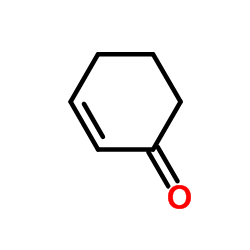 CAS#:930-68-7
CAS#:930-68-7 CAS#:766-07-4
CAS#:766-07-4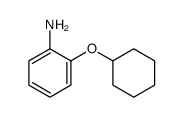 CAS#:105973-37-3
CAS#:105973-37-3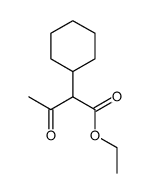 CAS#:10547-56-5
CAS#:10547-56-5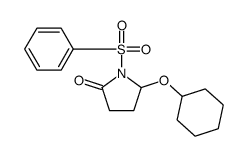 CAS#:111711-87-6
CAS#:111711-87-6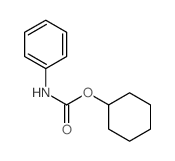 CAS#:3770-95-4
CAS#:3770-95-4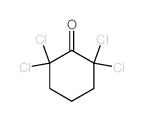 CAS#:3776-30-5
CAS#:3776-30-5 CAS#:765-87-7
CAS#:765-87-7 CAS#:533-60-8
CAS#:533-60-8 CAS#:3883-95-2
CAS#:3883-95-2
